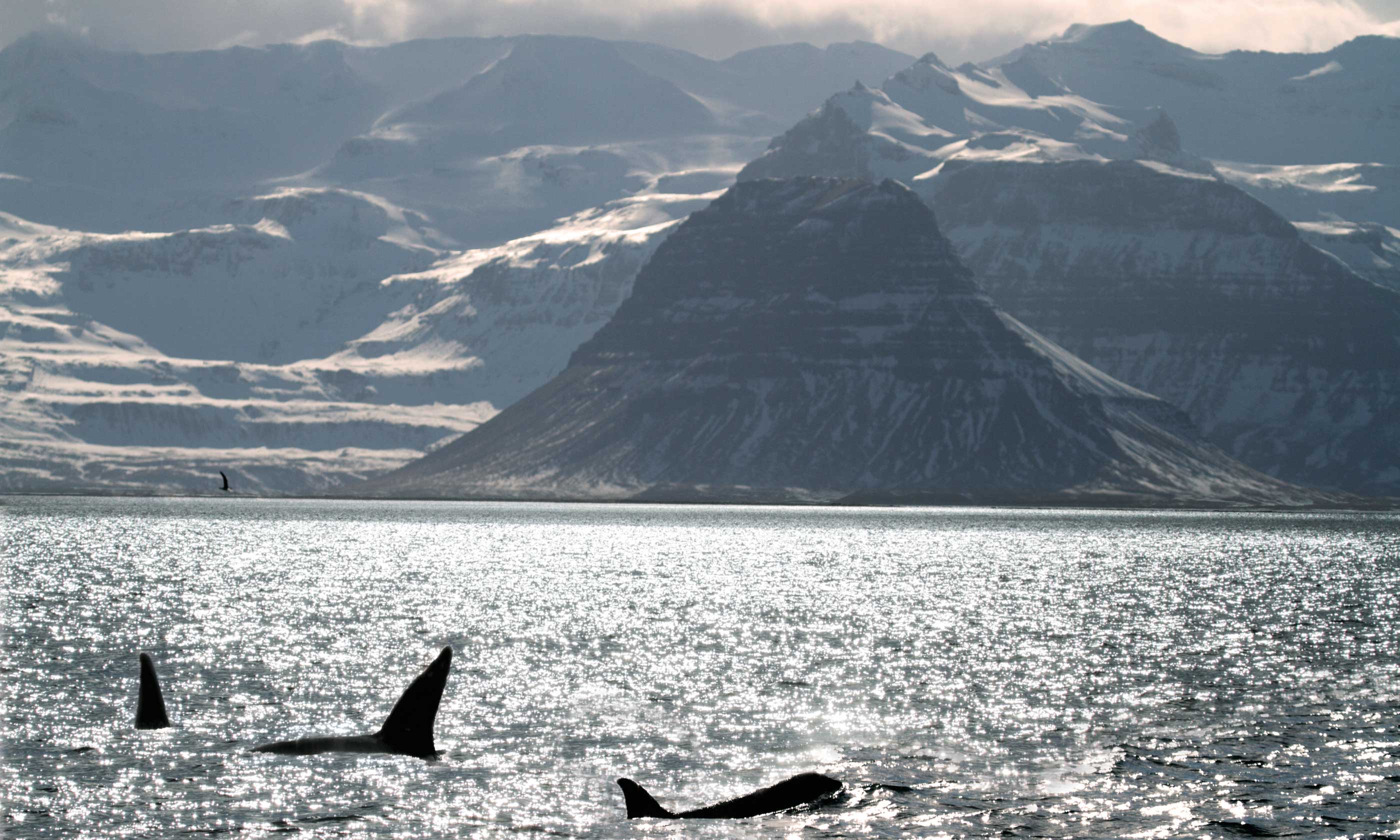
Icelandic winters might be chilly but they’re far from lifeless – indeed, it’s the best season to spot feeding orcas and, with luck, the northern lights says William Gray
I would cheerfully travel to Iceland in the depths of the bleakest winter to see eider ducks. Great rafts of these handsome seabirds pepper the bays and fjords at this time of year, the males dapper in piebald plumage (a jade flourish to their napes); the females brown but exquisitely marbled. Imagine watching a thousand of them scattered like wildfowl confetti beneath a meringue-whip of snow-covered mountains, their calls rising and falling in soft coos of contentment. Add a few harlequin ducks – royalty among wildfowl – and I am a happy man.
Ducks do it for me, but they weren’t the only things causing ripples off Iceland’s Snæfellsnes Peninsula when I travelled there last winter. Dangling into the North Atlantic like a bony finger calloused with mountains and volcanoes, this wild slither of western Iceland has become a winter wonderland for whale-watchers. As much as I wanted to feast my eyes on eider ducks, killer whales kept stealing the limelight.
A black triangle rose above the surface, followed by another, until the sea was jagged with dorsal fins

It was a sunny morning in March when we boarded the Láki for our first orca-watching trip from Grundarfjörður – a fishing village on the north coast of the Snæfellsnes. A lone male eider tugged at the pristine reflections of the old wooden trawler as we cajoled ourselves into polar suits. Winter sunshine is no match for wind-chill when you’re just a degree or two below the Arctic Circle.
“The south wind coming off those mountains can be so ferocious, even the trees are tied down,” explained Cathy Harlow, one of the guides on my four-day trip, nodding towards the peaks above the bay. Some were striped black and white, snow upon basalt, like great slabs of Vienetta. But one mountain stood out from the others – a conspicuous 463m-tall monolith called Kirkjufell, or Church Mountain. From the air it was supposed to look more like Harry Potter’s Sorting Hat. From the sea, it rose dark and jagged, like a dorsal fin rolling through the snowy crests and troughs of a mountainous sea.
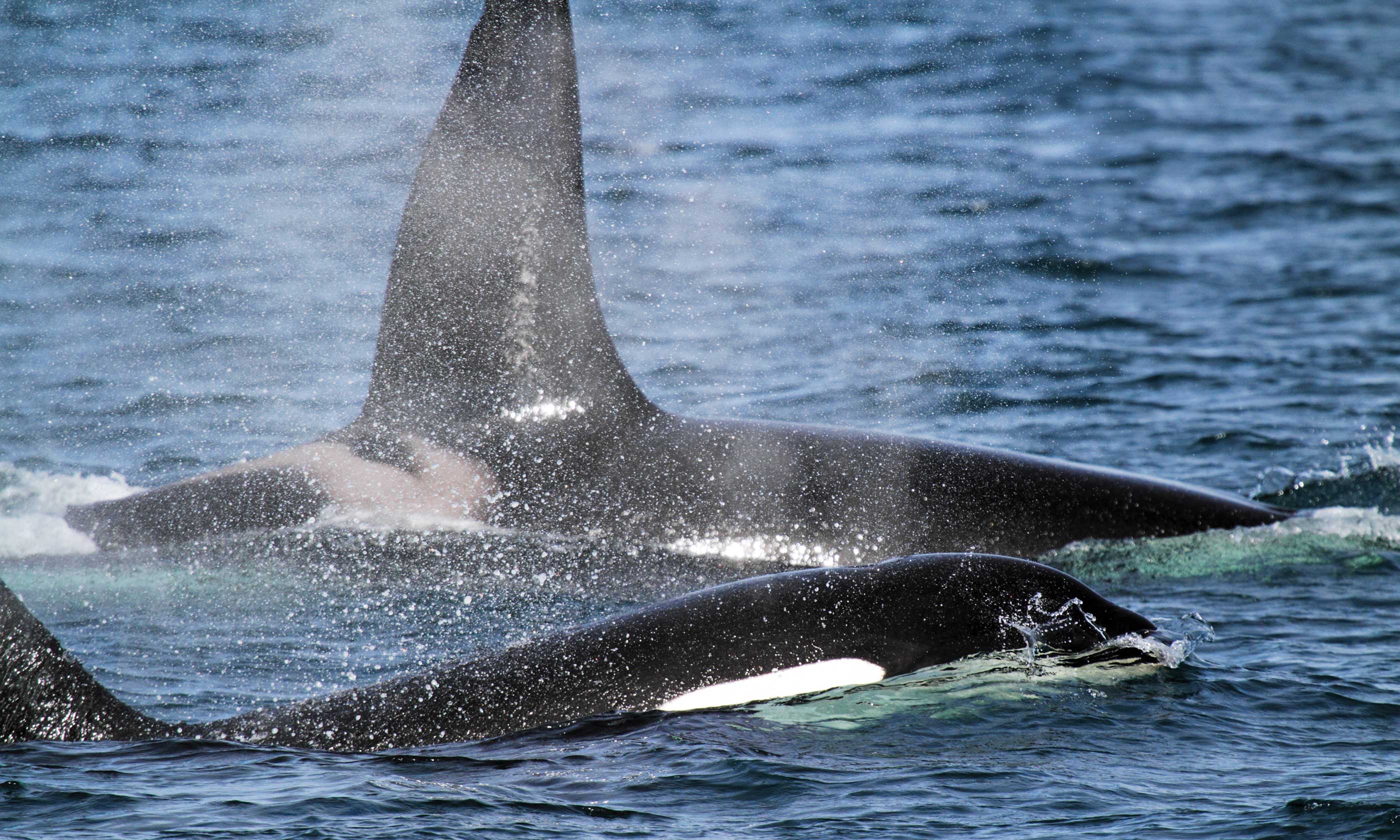 The Láki was barely 30 minutes out when the first cry went up from the spotter above the wheelhouse. A dozen or so heads spun to three o’clock, just in time to see a puff of whale breath suspended above the sun-spangled sea. It hung in the air like a hazy exclamation mark, an ephemeral sign of exciting things to come. Sure enough, a second later, a black triangle rose above the surface, followed by another, then another, until the sea was jagged with the dorsal fins of 20 or more orca.
The Láki was barely 30 minutes out when the first cry went up from the spotter above the wheelhouse. A dozen or so heads spun to three o’clock, just in time to see a puff of whale breath suspended above the sun-spangled sea. It hung in the air like a hazy exclamation mark, an ephemeral sign of exciting things to come. Sure enough, a second later, a black triangle rose above the surface, followed by another, then another, until the sea was jagged with the dorsal fins of 20 or more orca.
“It doesn’t look like herring is on their minds,” said Alexa Kershaw, our cetacean expert, thick mitts clasped around her binoculars. She carried on to explain that orcas show four main types of behaviour: resting, socialising, feeding and travelling. The oncoming pod was clearly on the move.
Soon they were surfacing either side of the Láki, their black backs glinting in the sunlight like pebbles of polished lava. Occasionally, we glimpsed a flash of white cheek or a grey saddle stripe. It was so calm that every time an orca surfaced, it dabbled in its own reflection. The air pulsed with their blows – soft explosions of breath that beat a strange percussion with the gently thudding engine of the Láki and the staccato ripple of cameras firing.
Two large males dominated the pod, their 1.8m-tall dorsal fins towering above those of the females and juveniles. I tracked them through the viewfinder of my camera, hardly daring to breathe when I realised they were about to surface with Kirkjufell as a backdrop and the sea like molten silver. For a brief moment, orca, mountain and ocean were framed in a single compelling view.
Back at the harbourside Hotel Framnes – our base in Grundarfjörður – Alexa placed a small orange sticker on a map hanging in the lobby. Judging by the rash of similar spots it had been an excellent winter for orca sightings.
The killer whales congregate in Breiðafjörður – the large bay that separates the Snæfellsnes Peninsula from the Westfjords – to feed on vast shoals of herring that overwinter there between October and March.
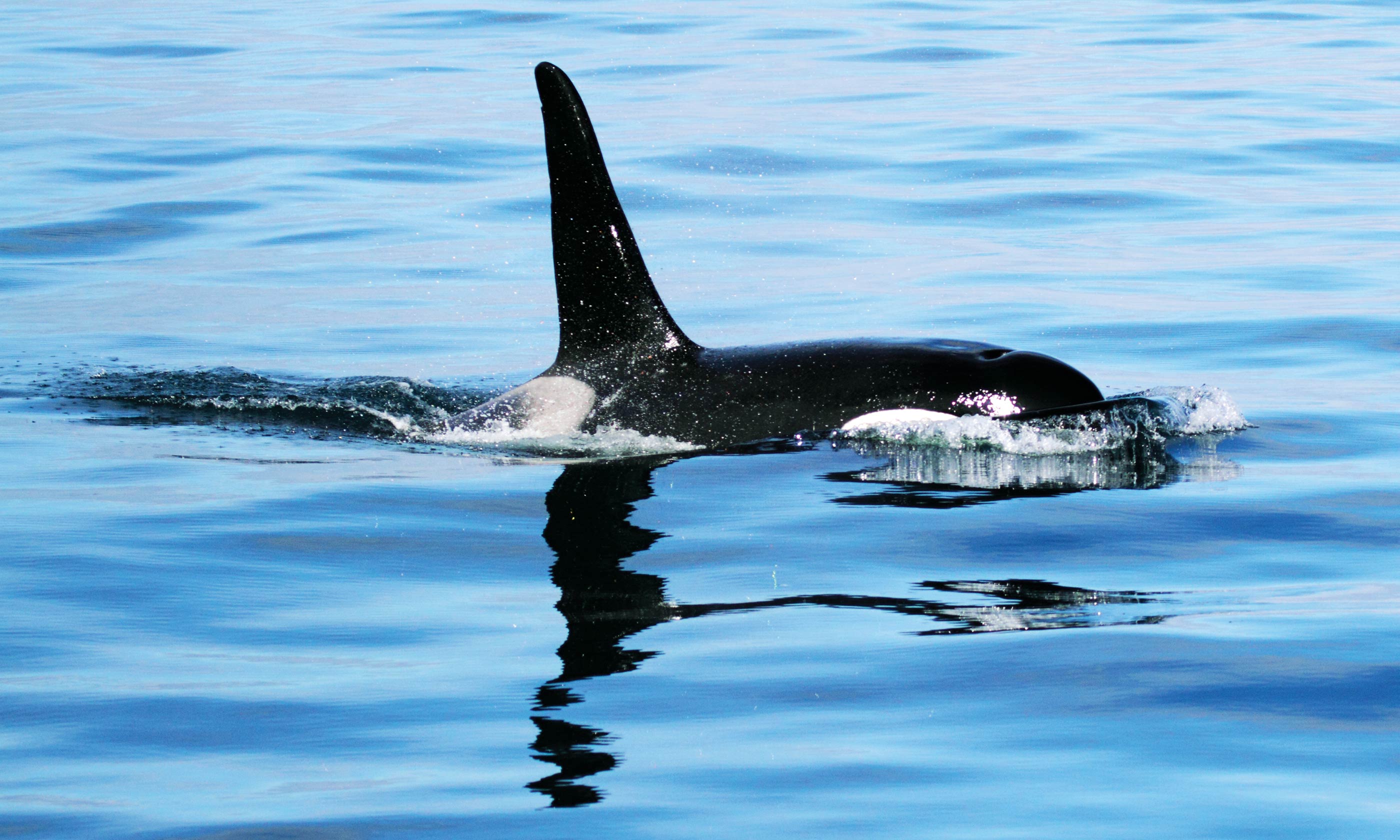 “The orcas use a unique herding call,” Alexa told us during a cetacean seminar that evening. “The low-frequency sound causes the herring to bunch together. The killer whales then stun them with a tail slap before picking them off one at a time, sometimes spitting out their heads if they’re feeling picky."
“The orcas use a unique herding call,” Alexa told us during a cetacean seminar that evening. “The low-frequency sound causes the herring to bunch together. The killer whales then stun them with a tail slap before picking them off one at a time, sometimes spitting out their heads if they’re feeling picky."
She went on to explain that although orcas are present year-round in Icelandic waters, it’s only during winter that you can observe them feeding close inshore. It’s not uncommon, she said, to see them from the hotel.
I glanced outside, half expecting to see a dorsal fin break the surface, silver herring scattering before a black and white snout crammed with 10cm-long teeth. No whales, but plenty of eider ducks, I noticed happily. Drifting into a wildfowl reverie, I was jolted back to Alexa’s slideshow by a startling, slightly eerie image of Kirkjufell swathed in luminescent green ribbons. Orcas are not the only natural wonders on show during an Icelandic winter – the aurora borealis does its best to outshine them.
Late that night I was woken by a loud knocking on my bedroom door. Just as the Láki had its orca spotters, Hotel Framnes had aurora lookouts. The northern lights had been sighted and soon the hotel corridors were bustling with guests grappling with camera tripods. It felt like a warship brought to battle stations.
Outside, we craned our necks skywards but clouds were already snuffing out the green blush over Breiðafjörður. We would try again the following night, Alexa told us. In the meantime however, we should get some sleep before our big day out on the Snæfellsnes Peninsula.
Around 90km in length and up to 20km wide, Snæfellsnes is easily toured in a single day – even during winter. A road traces its rocky coastline, joining the dots between a handful of villages and venturing over a couple of passes in the peninsula’s mountainous spine.
Heading west from Grundarfjörður we skirted Kirkjufell (mirrored in the partly frozen bay) before being treated to a rare view of Snæfellsjökull, free of cloud and dazzling white against a gas-flame sky. The mythical setting for Jules Verne’s Journey to the Centre of the Earth, the 1,446m-high volcano last erupted around 1,900 years ago. Now it squats at the tip of the peninsula, brooding under a generous dollop of ice.
A short distance beyond the fishing village of Ólafsvik, the road began to grapple with old lava flows, which spread north from the great volcano in a primeval plain of basalt and cinder, charred and blistered like burnt soufflé. We stopped to climb Saxhóll, a small parasitic cone that studs the volcano’s western flank in a rust-red pimple of crumbly lava.
At nearby Djúpalónssandur, we also set out on foot, following Arctic fox prints through scraps of late-winter snow to reach a spectacular beach of black pebbles, sluiced by North Atlantic breakers. At the head of the beach, four incongruous boulders hinted at a bygone age when fishermen, rowing open boats, tested their strength by attempting to lift the rocks onto a waist-high ledge. To be eligible as an oarsman, you had to shift Weakling – the third-heaviest boulder at 54kg. I managed to nudge the 23kg Bungler, but baulked at the two heavyweights, Half Strong and Fully Strong, weighing 100kg and 154kg respectively.
You only had to walk past the twisted shards of rusted iron scattered above Djúpalónssandur’s high-tide line to appreciate the brutal force of the seas along this exposed coast. They are all that remains of a British trawler wrecked in 1948 with the loss of 14 of its crew.
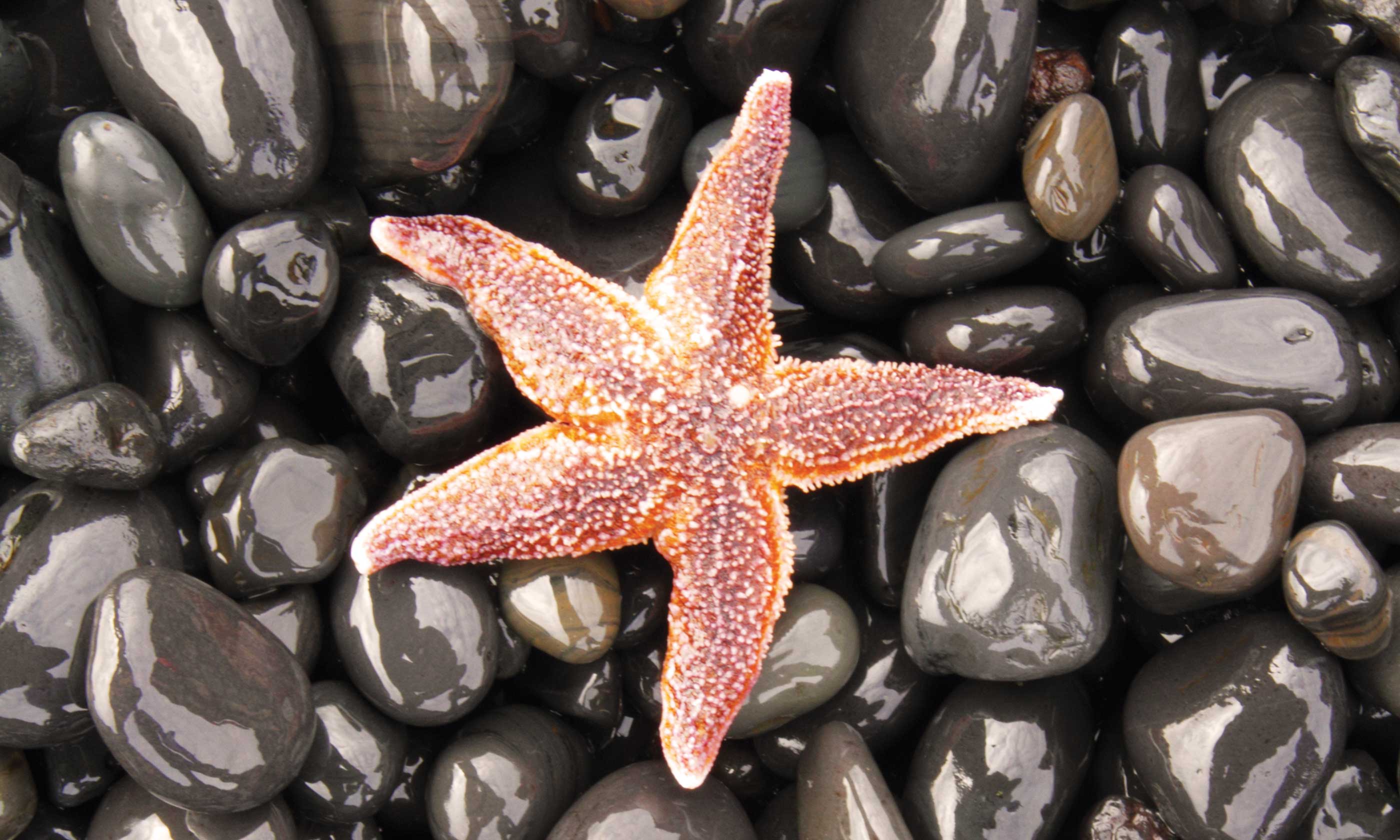 Wild & welcoming
Wild & welcomingYou’d be forgiven for thinking that this extreme tip of Snæfellsnes was too savage and raw – too new – to sustain anything more than a hesitant fuzz of lichen or a tenuous drizzle of kelp. And yet, a few miles south of Djúpalónssandur, we found precocious swarms of fulmars and kittiwakes festooning sea cliffs.
There were creature comforts too. A tearoom perched above the sheltered cove at Hellnar countered the sub-Arctic breeze with lacy tablecloths and homebaked cakes. At Anarstapi we stopped for a winter-warming meal of vegetable broth and pancakes stuffed with rhubarb jam and cream.
Even the land mellowed as we continued east along the south shore of the peninsula. Snug in grass-covered dunes, the little black-roofed church at Buðir is a popular wedding venue for both locals and tourists, while the hamlet’s boutique hotel is renowned for its seafood.
We completed our circuit of Snæfellsjökull by scaling a pass not far from Buðir, the road hemmed in by snowdrifts before unravelling to the north coast. By the time we returned to Grundarfjörður, we had spotted several seals and a sea eagle. Hopes were running high for the following day’s whalewatching trip.
We were lucky again with the weather: clouds fracturing overhead as the Láki set sail. However, by the time we’d spent a fruitless hour scouring the bay for telltale blows, the notorious southerly had strengthened enough to white-rib the sea. Fulmars cartwheeled wildly above the steadily building swell, and scythed back and forth in our wake, mocking the wind.
We had turned back towards harbour when Alexa spotted the white-beaked dolphins – dozens of them racing through the whitecaps, converging on the Láki like playful torpedoes. Several took up position beneath our bows, each streamlined body a streak of charcoal and silver, inches beneath the surface. Others cavorted alongside the boat, surfacing and submerging with almost breathless speed. They made our orca encounter from two days earlier seem almost ponderous by comparison. Even so, back in Grundarfjörður, I couldn’t help lingering along the breakwater in front of our hotel, admiring the eider ducks, but secretly wishing we’d seen orcas again.
An hour later I was still stealing wistful glances at the sea from the window of my hotel room. The first distant splash far out in the bay I discounted as windblown spray scuffed off the back of a large wave. But the second looked too vertical – a spurt of water too high and isolated to be part of the sea’s rolling turmoil. Fumbling for binoculars, I focused on the lumpy grey hide of the bay. Fountains of water were erupting at regular intervals about a kilometre from shore – and I could clearly make out birds circling overhead, folding their wings like paper darts and hurling themselves into the water. Gannets feeding!
It’s well-known fieldcraft for whalewatchers: look for foraging seabirds and then look again at what might be feeding from below. Right on cue, a pod of killer whales surfaced in the melee of plunge-diving gannets. I counted at least six dorsal fins – and they were heading straight towards the harbour.
Pandemonium broke out at the hotel as the whale cry went up. There was a mass exodus from the hottub and bar as people began sprinting towards the jetty. I caught up with them just as the orcas surged past – barely 20m from where we stood. These were not the laidback ‘travellers’ we had seen previously, but hyped-up hunters, pursuing a shoal of herring, lunging at the fish, tail-slapping and writhing on their sides in a feeding frenzy.
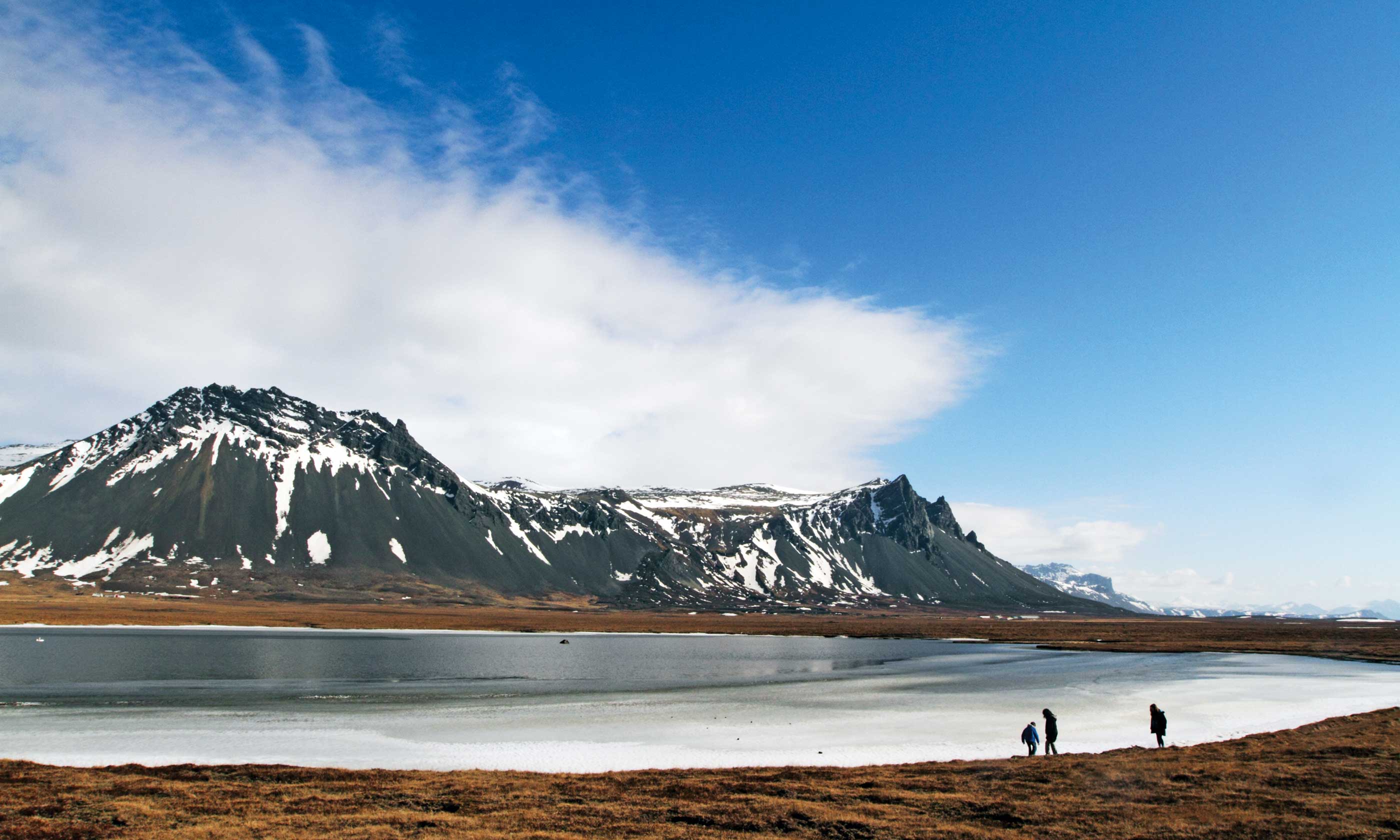 And they didn’t stop at the harbour. The killer whales drove their prey almost onto the beach. Cars were stopping on the coast road, their occupants spilling out to watch the spectacle. Gulls fussed overhead, swooping down to grab the leftovers, while gannets continued their aerial assault, a relentless salvo of dagger-shaped bills.
And they didn’t stop at the harbour. The killer whales drove their prey almost onto the beach. Cars were stopping on the coast road, their occupants spilling out to watch the spectacle. Gulls fussed overhead, swooping down to grab the leftovers, while gannets continued their aerial assault, a relentless salvo of dagger-shaped bills.
Then, as quickly as it had begun, the herring hunt ended. The gannets dispersed and the last I saw of the killer whales was a single dorsal fin, rising and falling, heading out of the bay.
The sun dipped behind the peaks of the Snæfellsnes Peninsula and a cold wind sent most people scuttling inside. I was about to join them when a soft cooing stopped me in my tracks. Orcas, auroras and volcanoes might well have stolen the limelight on my trip, but there would always be time for a spot of eider duck appreciation.
The author travelled with Iceland specialist Discover the World, which offers a wide range of independent and escorted trips. The four-night Killer Whales & Northern Lights guided tour includes transfers, full board at Hotel Framnes, two whale-watching boat excursions, a peninsula tour and entrance to the Blue Lagoon; flights are extra. A three-night self-drive option costs from £350pp, including room-only accommodation and car rental. Special Christmas and New Year departures combine whales and aurora with festive celebrations. The week-long WhaleFest event each February features three boat trips and expert lectures.